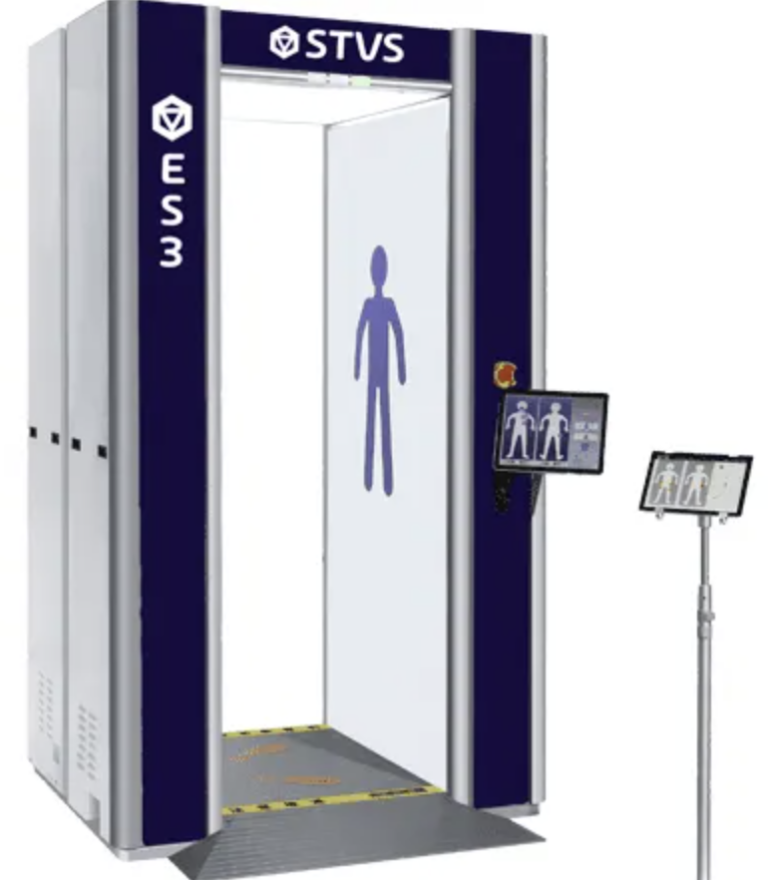Fiber Optics in the Justice System
 The judicial system has a number of applications in which fiber optics plays an important role for both security and communications. The benefits of a fiber optic infrastructure are well known and include such features as longer transmission distances, multiplexing many signals over one fiber, noise immunity, signal type agnostic and more.
The judicial system has a number of applications in which fiber optics plays an important role for both security and communications. The benefits of a fiber optic infrastructure are well known and include such features as longer transmission distances, multiplexing many signals over one fiber, noise immunity, signal type agnostic and more.
Applications for fiber in the judicial system include prison security, remote visitation and arraignment, courtroom proceedings coverage, media feeds and Inter and Intra courtroom audio/video. In order to optimize any communications infrastructure design, it’s important to understand how some of these applications can be realized with fiber.
Video Surveillance
Prison CCTV security systems can take on various architectures from a traditional point-to-point network of analog cameras to a self-healing, dedicated IP network. Outdoor perimeter security, as well as exercise or recreational area surveillance, are ideal applications for fiber optics. In many areas of the country, outdoor cameras for these applications are prone to lightning strikes. Using traditional copper connectivity puts the entire communications equipment at risk from damage due to either direct or indirect lightning strikes. The induced charge from one of these strikes will not only damage or destroy the outside cameras or access control panels but also may propagate down the copper cable and cause similar damage to the connected equipment at the head end. Fiber, on the other hand, eliminates the possibility for this charge of energy from propagating back to the main equipment room, thus protecting it from damage.
This figure illustrates an example of outdoor video architectures using fiber. This example illustrates network connectivity for a number of IP cameras. While the connection between the camera and the remote or local IP switch is copper, the switches are interconnected using fiber via standard SFP (Small Form Pluggable) optical modules. In this case, if one camera were to take a lightning strike or have a voltage surge, the equipment damage would be limited to the camera and the Ethernet switch to which it is connected. Again, this damaging energy will not propagate down the fiber, thus protecting the other equipment connected via fiber. Using managed Ethernet switches, a self-healing ring can be realized, providing additional network protection against single point or localized failures.
An alternative approach would be to use a traditional “point-to-point” analog CCTV system where each of the camera’s video and PTZ information is transmitted over one fiber back to the head end location. Additional alternatives to these designs include multiple videos over the same fiber, as well as other data or contact channels for such items as tamper switches, gate access, etc.
These are two straightforward examples of how fiber can be utilized to not only transport the signals but also protect the entire network from a single point of failure, such as physical damage, voltage surges or lightning strikes.
Remote Visitation
Remote visitation can also benefit from the use of fiber optics. Real-time video and audio are very desirable in a remote visitation system to help ensure the highest-quality signals. Point-to-point fiber connectivity offers such an effective solution. A hardwired solution would generally require individual video, audio and optional data cables for each visitation location going from the visitation room or booth back to the distribution/recording location and then on to the respective inmate’s location. In many prisons, multiple remote visitation locations are present, resulting in a large number of copper cables run over potentially very long distances.
Fiber optics affords the ability to multiplex a number of video and audio signals over a single fiber, thus minimizing the number of fibers and associated fiber interconnects. These diagrams illustrate two such fiber systems. One uses two fibers for bidirectional transmission of both video and audio. A 4-channel video and audio multiplexer transmits the signals from four individual visitation rooms to the head end location, while a separate 4-channel video/audio mux transmits the signals from the inmates’ locations through the recording/switch room back to the visitation facilities.
The second design example shows how multiple bidirectional video and audio signals can be transported over one fiber. Using both time-division (TDM) and wavelength-division (WDM) multiplexing, multiple channels of both video and audio can be transmitted over the same fiber. As required, additional signals can be added to these units for such features as PTZ control or remote contact closures.
Remote Arraignment
A closely related application is remote arraignment. In this application, the accused is placed in an arraignment room, and the judge in the courtroom officiates the proceedings. In this case, the two locations (prison/jail and courthouse) may be many miles away. In addition, since many signals can be transmitted simultaneously in real time over fiber, remote arraignment systems from different courtrooms in the same courthouse can be sent over one fiber using wavelength multiplexing to different, isolated arraignment rooms in the remote corrections facility. In addition, using this multiplexing technology, other signals, such as Ethernet and data, can be sent over the same fiber — further exploiting the significant capabilities and advantages of fiber.
A combination of electrical signal and optical multiplexing (Coarse Wavelength Division Multiplexing-CWDM) provides a very efficient method for combining many varied signals onto one fiber — all being transmitted in real time. A single fiber transmitter/receiver pair can combine a number of bidirectional video, audio and data signals into one data stream, while optical wavelength multiplexing can combine a number of these data streams from different transmitters (arraignment or courtrooms) onto a single fiber for transmission over long distances. This wavelength multiplexing technology also allows the user to add more remote arraignment or witness locations on the same fiber without the concern for being either bandwidth or capacity limited.
Courtroom Video/Audio
Many courtrooms now have fiber optic AV connections at the judge’s bench and attorneys’ tables, as well as the witness stand, document camera, jury box, gallery and other locations within the courtroom. Each of these locations may have only video, while some include both video and audio. In many applications, these video and audio signals are sent from the courtroom to a central AV room, where they are switched or routed to various locations within the courtroom. The presiding judge generally controls these signals from a control panel on the bench. To ensure the highest-quality video as it is routed around the courthouse, fiber becomes an obvious choice. In addition, the types of signals being transmitted may vary, and fiber, being signal-type agnostic, is a perfect transmission medium for these varied signals.
Media Feeds
Another important application for fiber in the courthouse environment is for remote audio/video media feeds. Most television stations now broadcast their signals in high definition (HD). HD media feeds from the courthouse are now standard and will transmit the highest-quality video available. Because of its high bandwidth, fiber is a perfect medium for transmitting these HD video signals, including SDI, HDSD and 3G signals — all of which require significant bandwidth on the fiber — far more bandwidth than possible over traditional copper transport solutions.
This figure illustrates how a single video and audio feed can be easily distributed and switched to a number of remote media pedestals or other receiving locations. The fiber transmitter from the AV room transmits both video and audio over one or more fibers to the optical splitter/switch. This splitter then distributes the optical signal to four different switched media pedestals for use by the various news sources or others monitoring the courtroom activity. The active optical switch is used to switch each output of the splitter to the specified remote location. These individual optical output ports can be selected either by the AV engineer or by the presiding judge simply by selecting the appropriate output channel via a touch panel control system. This active switch gives the judge control over what information becomes available to the viewers and to whom it is distributed.
These examples further illustrate one of the key features of fiber — it is essentially “transparent“ to the quantity and types of signals being transmitted. Using the same fiber, all types of information can be transmitted. In addition, it provides a perfect medium for technology upgrades. For example, as HD cameras become more affordable, traditional security CCTVs may be replaced with these newer HD cameras, without concern for the fiber infrastructure.
These examples of criminal justice applications illustrate the broad flexibility and capabilities of fiber and how it can integrate seamlessly into these applications. Clearly, other courtroom and criminal justice applications can benefit from fiber. Technology proofing is inherent with fiber, and properly implementing wavelength multiplexing and optical switching/routing ensures that the system is designed to take into account the ever-growing demand for more bandwidth and real-time signal transport, as well as evolving technologies.






